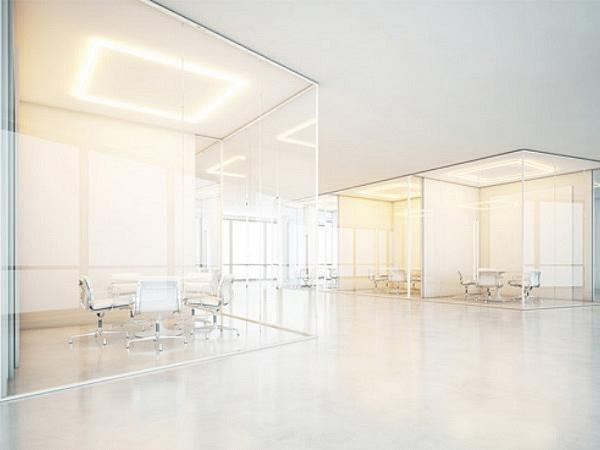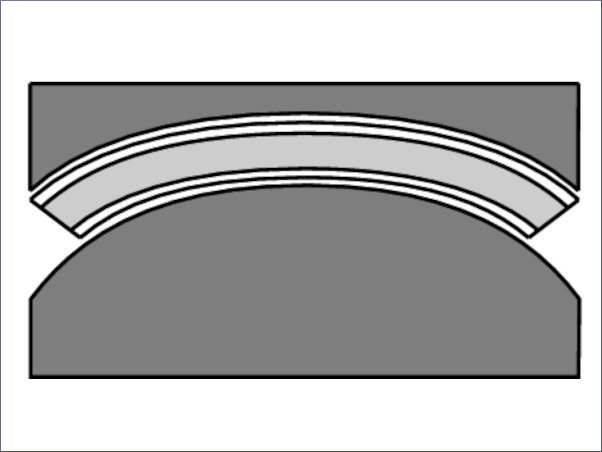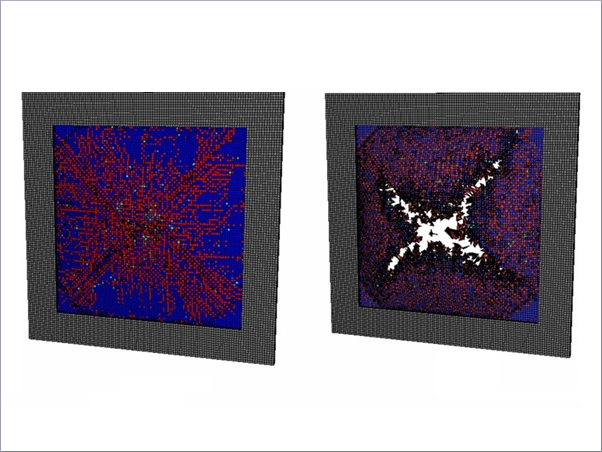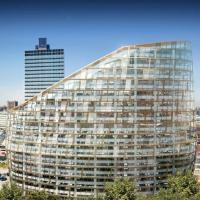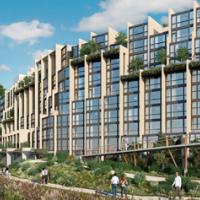First presented at GPD 2019
Colour theory and reference material behind threshold will be presented, and the implication of threshold in the design and specification of glass in various architectural applications will be examined.
Humans have the ability to discern colour and contrast, but there is a range of differences in colours and contrast that the human brain cannot perceive. The signal strength between differences must be great enough for the mind to be able to conclude there is a difference. This phenomenon is known as threshold.
The emotional content of shapes and colours will also be investigated. What shapes and colours are most pleasing, and how aesthetics impact the psychological state of occupants will be presented.
Other discussion points include:
• How situational constructs trump disposition and can be used to induce favored behavior
• Feature frequency and how position, perspective, and design can impact traffic flow
• How the indoor physical environment can provide health and productivity benefits
• Variables such as borrowed light, views, and sound control play a role in productivity and performance
• Desired emotion and occupant behavior can be supported by creating congruent situational attributes
1 Introduction
Situational attributes provided by environmental conditions impact the behaviour of individuals. The way people act can be significantly altered by involving authorized direction and providing an environment that induces, promotes, and reinforces the desired behaviour.
It thus becomes ultimately important that the design of interior spaces highlights and supports the ideal conditions matching the culture, experience, or wanted outcomes of occupants and visitors. There is a level of integrity and responsibility that must fall upon the architect or designer to meet both corporate and societal needs in keeping with the greater good.
Light, airy, transparent, and perhaps sterile aesthetics may lead to certain behaviours that may be fitting with the organization or may be incongruent with the anticipated culture and direction (figure 1).

2 Situational Constructs
Behaviors may be altered by providing situational prompts. What people see, hear, smell, taste, and touch activates emotional responses and conditions behaviors.
The design of buildings has been shown to create emotional response. Whether order or chaos ensues, if students excel or flounder, or what actions are most easily accessed may be a direct result of the constructs provided.
Psychologists have utilized experiments to induce behavior in test subjects. These experiments have included changes in the physical environment, as well as the dress of persons interacting with the subjects. The overall experience of test subjects is modified in content and stimuli strength in order to investigate and record response to variables, and research how each change modifies reaction.
2.1. Experiments in Design Gone
Wrong In a series of controversial experiments, Milgram and others show that individuals tend to change the way they act due to situational variables that promote conformance despite the dispositional attitudes present. Humans tend to give over their decision-making power, logic, and reason to the control of a higher authority if put in certain roles and provided with reinforcing environmental aesthetics, conditions, or situations.
Milgram went through great efforts in his experiments to create a simulated shock machine in a laboratory setting so realistic that it fooled two electrical engineers [1].
In his experiments, Milgram would have a test participant issue a shock to an actor that appeared to be another test subject. The shock was fake, but the actor made it appear to be real. A doctor or facilitator wearing a lab coat, holding a clip board, and providing the official authorization to continue onward would prompt the test participant to issue greater levels of corrective shocks to the actor.
Part of the success of the experiments was as much the acting and sensationalized production as the study itself [2]. The experiment shows how easily people are moved to do things that harm others and justify these actions through outside control. But, the experiment can also show authority how to better control the general public. Have we learned to be wary of authority, or have we gained useful insight into how authority can better control the public? Current research suggests continued support for control through environmental and authoritarian factors.
2.2. The Decision Making Process
It is theorized that there are three stages in a decision-making process [3]. These stages lead to determine the behaviour of experiment participants and building occupants alike. The stages are priming (collecting evidence), decision (mental), and choice (action).
Priming is where a person is affected by the situational factors such as aesthetics, design, colours, lighting, and the atmosphere created by the “set” and the people and processes within the environment. The situational priming is magnified by things such as salience of the evidence intuited through all the senses, including emotional experience, and visual, tactile, and auditory feedback. The decision stage is where the participant resolves what to do next.
2.3. The Decision Making Process
Zimbardo’s infamous Stanford prison experiment also utilized authority and environmental situational factors to control the behaviour of test subjects. Students were randomly selected to play the role of guards or prisoners in a simulated prison environment. The prison guards became torturers, embodying the behaviours of the provided situation. A graduate student forced Zimbardo to stop the experiment. Both Zimbardo and the participants had lost touch with reality and accepted the evils being perpetrated as tolerable behaviour in the given situation [4].
2.4. Design for Good
The experiments show that situational experience and atmosphere can overwhelm innate disposition to move people to perpetuate actions and behaviour desired by authority. Since situation trumps disposition, is it not the role of architects and designers to help create the wanted emotional response in those visiting, working within, or simply viewing a building?
That being the case, perception, threshold, colour, and shape are all important variables in framing the human emotions derived from architectural designs, and specifically in glass design. Glass can bring light, add clarity, provide colour, and create atmosphere through contrast, pattern, and shape. The simple synergy of space and its interaction with movement can tailor emotions and response. Creativity can be enhanced, performance b. enefited, and well-being safeguarded.
3 Features, Shape, and Surface
The physical environment includes materials, objects, shapes, colours, patterns, size, lighting, etc. Sounds, smells, and other nonvisual items will not be discussed at present. Impact of design choices vary upon the observer, but generalities in response have been shown to exist across diverse groups.
3.1. Context and Content
Feature saliency, or the quality of a feature being noticeable and impactful, is inversely proportional to the frequency of a feature’s appearance [5]. Little things, sparse usage, and unique features make a big difference to observers. One red boat is much more noticeable to many than many red boats (figure 2). Redundancy of colour, shapes, or objects tend to cause lost impact and may be overwhelming. On the other hand, subtly repeating features throughout an environment may also be comforting as a point of consistency.

The environment created with situational context effects neural processing and impacts social perception [6]. When a building is designed with shapes and colours that move people to collaborative and positive outcomes, positive results ensue.
The design of a building can make occupants feel an affinity for each other. Emotional context of environment impacts the way humans perceive neutral faces [7]. A welcoming building design will predispose occupants to being more receptive of each other. A receptive building and a receptive organization lead to a well-received client.
3.2. The Shape of Things
Certain shapes or features of designs relate to protection, positive feelings, and feminine qualities whereas other shapes or features of designs are associated with threat, negative feelings, and masculine characteristics [8]. Both male and female participants found curved designs to be more nurturing and welcoming than angular shapes [8]. Shapes of objects, patterns, and designs are important in creating environmental emotional context (figure 3).

3.3. Surface Impact
Storefronts may have harsh angularity further aggravated by shiny lights bouncing off the exterior glass surface (figure 4). The sharp shapes and corners may create an emotional response opposite of what is wanted. Angular and straight edges innately seen as teeth, razors, or knives can provoke avoidance and a flight or fight response from consumers.
Softening of hard surface and reduction of angularity becomes a solution. If the glass was not noticeable in the above example, the focus of the consumer could be brought into the store. A subconscious emotional welcome may be felt as the colours, curves, and features of the store would be in the forefront of the senses.

4 Threshold: When does a Reflection Become Noticeable?
Humans have the ability to discern colour and contrast. For every light level, there is a range of colours and contrast differences that are unperceivable to the human brain. The signal strength between the differences has to be great enough for the mind to be able to conclude there is a difference. This phenomenon is known as threshold.
4.1. Non-Reflective Materials
This threshold phenomenon is what sets anti-reflective glass types apart. Reflections become unnoticeable when they cause a contrast or colour deviance of less than 0.5%. In environments where the glass has been designed for high transparency, the light levels are similar on both sides. This is why it becomes important to utilize materials with the lowest reflectivity possible to minimize the chance for distraction.
One of the standard measurements in colour matching taken from the textile industry is delta E (dEcmc) which is a calculation combining lightness or contrast and colour variance [9]. While differences in contrast are more allowable than colour, there is an acceptable range set in commercial applications. Colour specialties industry standard treats a deviation of less than 0.5% dEcmc as being an indiscernible colour and contrast difference [10]. However, not all eyes are the same.
In regard to contrast -the difference in lightness and darkness - there needs to be a greater than 1% difference in order for humans to see an apparent difference nearly 100% of the time [11]. According to Malm [11], in cases of contrast level differences of less than 0.5%, the difference becomes unnoticeable to nearly everyone:
• Under 0.5%, the reflection (contrasting light) becomes unseen
• Above 1.0%, the reflection (contrasting light) becomes 100% noticeable
4.2. Contrast Threshold of 1%
The ability to detect contrast differences is based upon visual perception sensitivity and delineates the threshold between what is visible and invisible [12]. Since 1860, scientific research has found and maintained that the threshold contrast level necessary for something to be seen is 1% for most objects within a wide variety of environments [12]. A thorough review of past measurements shows that the threshold contrast has remained at 1% independent of dimensions and light levels [12].
The simple test used for research of this phenomenon consists of two candles of the same light level being used to illuminate a screen or wall. One has a simple solid and opaque cylinder placed in front to cast a shadow on the screen. By varying the distance of candles from the screen until the shadow is perceived or not perceived, the ratio of light between the unobstructed screen and the shadow cast on the screen can be calculated.
The amount of light difference along the edge of the shadow is determined by the far candle with the opaque cylinder in front, as the amount of light from a point source varies as a function of the inverse of the distance squared [12]. The measurement of threshold comes at the point when the observer can just barely see the shadow.
This technique consistently results in observation of a 1% threshold [12]. Other methods, such as using a spinning disc with a black slice section that when spun creates a black ring, have also shown a 1% level as the threshold over a wide range of light levels [12].
4.3. Colour Threshold of .44% to .69%
Colour differences are detected similarly to differences in contrast, but become noticeable when the perceived colour shifts (not just brightness level) enough to reach threshold. The human eye detects colours with differing specialised receptors which are excited by blue, green, and red wavelengths of light. Each receptor reacts similarly to colour and light level changes but follow the same general rules as threshold for contrast.
The required level of cone excitation change for threshold detection of colour signals remains equal for a given background excitation level [13]. Each cone reacts independently of the others in the level necessary for detection, enabling the predictive modelling of detection thresholds necessary for any specified background light level and colour [13].

S-cones are excited by blue wavelengths (435 nm), M-cones are excited by green wavelengths (535 nm), and L-cones are excited by red wavelengths (565 nm) (figure 5). Research supports a significant and strong linear threshold relationship (r2=.90 and .94 respectively) between the M- and L- cone excitations changes required to differentiate between foreground and background colour and brightness levels [13].
Blue cones are much less sensitive to excitation changes, with nearly 5 times more change necessary to reach threshold differences. The M (green) and L cones (red) required approximately .44% - .69% excitation change to reach threshold levels necessary to be detected [13].
4.4. Threshold to Reach Reflection Visibility
Light is always reflecting from glass surfaces. The question is whether it is visible to the observer. When the level of reflection does not reach threshold, it is said to be invisible. The contrast threshold of 1% and the colour threshold of .44% - .69% interplay in the effect reflections have on the observer when looking through glass. If the reflection causes a combined light or colour level difference that reaches threshold, the reflection becomes noticeable.
For simplification purposes, under .5% has been selected as below threshold for contrast and colour as represented in the findings of the referenced studies. Similarly, 1% threshold is presented as a level of contrast or colour difference where the change in level is apparent and seen by 100% of normal observers. It is important to understand these ranges in respect to reflection. The reflection is analogous to the light shadow cast by the far candle in the prior referenced example. Reflections cause changes in perceived light levels, contrast, or colours if they reach the threshold level.
4.5. Not a Reflection of You
Invisible storefronts create a unique aesthetic appeal. With reflection reduced by up to more than 16 times when compared to uncoated float glass, product displays pop and architectural designs transcend nature. The store blends effortlessly with its surroundings, becoming one with the environment. Foot traffic swells. As a natural result, your client smiles.

Views become breathless through antireflective glass. The type and application of anti-reflective coating can provide glare-free glass storefronts with visible light reflection ranging from less than 0.5% up to 4% as well as produce little to no discernible colour shift. Anti-reflective storefronts are available in monolithic, tempered or laminated glass, and insulated units.
With large formats also available, the many fabrication options give unrivalled flexibility in aesthetically pleasing applications. Many glass fabricators stock and custom process anti-reflective glass to bring life to architectural designer creations. Imagine an environment where beauty flows effortlessly together without the harsh reflections of unforgiving float glass. A store front with anti-reflective glass creates separation without reflection (figure 6).
Today’s anti-reflective coating technologies produce glass that limits glare and unsightly reflections in numerous unique applications. These high-tech coatings remove distractions from picture frame glass, allowing the artwork to leap off the wall and become the focus of attention.
Anti-reflective storefronts invite customer attention and welcome passers-by to come in and shop. When used in projection systems or displays, the light or visual media smoothly transmits through the glass, capturing the viewer’s attention without double images or visual light-front interference.
4.6. Transparent Communication
Restaurants, boutiques, and image-conscience retail shops require their carefully-designed, visual display elements to be communicated in the most favourable light. Glass provides a weather-tight, physical barrier that still maintains a visual connection between the public and the store. Unfortunately, traditional glass also creates a secondary plane of focus pulling attention away from what is in the store to the reflections on the glass surfaces.
Anti-reflective glass can virtually eliminate the reflection enabling the store’s inner beauty to speak for itself. Traditional glass reflects 8% of the visible light. What does this really mean in real life? Only 92% of the outside light source reaches the inside of the storefront through traditional glass, providing a maximum potential for surface viewing of 84.6%, since 8% of light suffers from internal reflection on the way back out. Maximum illuminance becomes 100% when no glass separates the light source and the object, and when no glass or substance separates the object and the observer
This threshold phenomenon is what sets anti-reflective glass types apart. Reflections become unnoticeable when they cause a contrast or colour deviance of less than 0.5%. In environments where the glass has been designed for high transparency, the light levels are similar on both sides. Therefore, it becomes important to utilize the lowest reflectivity possible to minimize the chance for distraction.
The difference between 1.0% and 0.5% may not seem like a lot, but it is the difference between a reflection being 100% perceived or nearly imperceptible. In other words, 0.5% is nearly 0% and 1% is 100% - a huge difference in perception for such a small difference in surface reflection.

Figure 7 shows a white block transition within the darker rectangle above. The left most line represents 0% reflectance/contrast whereas the far-right line represents 4% for the transition with the line segments shown. 100% of people surveyed saw contrast differences above 1% (third line from the left). To the left of the second line, the white block became completely unseen.
5 The Colour of Moods
Colours make the world go ‘round. Bright yellow like the sun, red like a ripe tomato, green like perfect sod, and the bright blue of an imaginary sky. There are innate connotations associated with colours, from beauty and warmth through rotten and spoiled. Colours mesh, mix, and clash. People have their preferences, but subconsciously triggered responses and the physical limitations of humans change how the pallet is perceived. Like a singer hitting a sharp or flat note, one colours frequency may not play well with others, or it may impact how the observer reacts.
5.1. Colour Impacts Colour
The impact on colour reflections is equal in significance to the impact of glass nuances which may render a colour slightly askew. The colour rendering index of glass is one of the measurements which compares how closely objects will be to their true colour when seen through the glass. Coatings, glass chemistry, and reflections may all have an impact on the perception of colour through the glass, but most attention has been paid to only the colour change imparted by the physical glass itself - and not the reflections.
Colours reflected from behind the observer may foul and obscure the true colours of the observed scene. There is no measurement or index associated with this shift in perception relegated to coloured reflections, but they are nonetheless important. For example, a colour next to a colour affects its appearance.
A line may appear both blue and green depending on the colour next to it (figure 8). The line is the same colour but the purple and orange colours frame the context in which the colour is viewed. The eye and mind automatically judge the line based upon the nearby reference altering perception. Reflections may also impact the colours seen through the glass in the same manner.

6 Sound, Light, and Ventilation
The physical environment can be vastly improved with costs of around $40 per person per year that yield $6,500 in productivity increases [14]. This can include ventilation, sound, and light improvements that provide benefits in the perceived well-being of the occupants as well. By simply adjusting the environment, a significant beneficial difference in health and productivity can be realized [14].
Workers in green certified buildings and ones that included lighting and ventilation improvements were shown to have 26-100% improvement in performance of cognitive tasks [14]. Changes included adding increased volumes of fresh air ventilation and the addition of blue light into the lighting spectra, as well as overall building design.
Workers allowed to control their own lighting show more commitment to their employers, are more positive, and have overall improved well-being [15]. Individually controlled lighting also may reduce energy usage for lighting up to 10%, according to studies [15].
Sound can be reduced in office environments by utilizing higher STC-rated materials such as insulated or laminated glass. Decorative laminated or insulated products can help provide light, sound, and other environmental benefits, including those related to the biophilic phenomenon. Colours, shapes, and images incorporated in the building environment can help provide an atmosphere in keeping with the mood or experience desired.
7 Summary
The situational constructs of building design create visual and other sensory triggers to deeply held, automatic, emotional response. These situational inputs inherently trump human dispositions and can be used to induce favored behaviors. Solitary or rare features can be used for individual impact, and increased frequency of more subtle features may provide a tie-in throughout the space resulting in comfort and consistency.
Glass is one material uniquely positioned to provide flexibility in reaching many of the design goals presented. It offers separation with the ability to borrow light, reduce sound, and decorate in limitless fashion. It can be both exquisite and powerful, provide form and structure, yet stimulate and evoke response. It is soft and silent, bold and beautiful, and enables designs to breathe life within architectural creations.
Architectural decorative glass can be used to influence and impact traffic flow as well as the mood and behaviour of the occupants. The indoor physical environment can create health and productivity benefits. Variables such as light, ventilation, and sound play a role in productivity and performance. Finally, the desired emotion and occupant behavior can be supported by creating congruent situational attributes.
References
[1] Russell, N. (2011). Milgram’s obedience to authority experiments: Origins and early evolution. British Journal Of Social Psychology, 50(1), 140-162. doi:10.1348/014466610X492205.
[2] Reicher, S., & Haslam, S. (2011). After shock? Towards a social identity explanation of the Milgram ‘obedience’ studies. British Journal Of Social Psychology, 50(1), 163-169. doi:10.1111/j.2044-8309.2010.02015.x
[3] Navarick, D. J. (2012). Historical Psychology and the Milgram Paradigm: Tests of an Experimentally Derived Model of Defiance Using Accounts of Massacres by Nazi Reserve Police Battalion 101. Psychological Record, 62(1), 133-154.
[4] McDermott, R. (2007). The lucifer effect: Understanding how good people turn evil – by philip zimbardo. Political Psychology, 28(5), 644-646. doi:10.1111/j.1467-9221.2007.00597.x
[5] Vazquez, E., Gevers, T., Lucassen, M., Weijer, J. V., & Baldrich, R. (2010). Saliency of colour image derivatives: a comparison between computational models and human perception. Journal of the Optical Society of America A, 27(3), 613. doi:10.1364/josaa.27.000613
[6] Lieberman, M. D. (2006). Neural bases of situational context effects on social perception. Social Cognitive and Affective Neuroscience, 1(2), 73-74. doi:10.1093/scan/nsl015
[7] Mobbs, D., Weiskopf, N., Lau, H. C., Featherstone, E., Dolan, R. J., & Frith, C. D. (2006). The Kuleshov Effect: the influence of contextual framing on emotional attributions. Social Cognitive and Affective Neuroscience, 1(2), 95-106. doi:10.1093/scan/nsl014
[8] Palumbo, L., Ruta, N., & Bertamini, M. (2015). Comparing Angular and Curved Shapes in Terms of Implicit Associations and Approach/Avoidance Responses. Plos One, 10(10). doi:10.1371/journal.pone.0140043
[9] Hunt, R. W. G.: The Reproduction of Colour. Chichester, West Sussex, England: John Wiley & Sons, 2004
[10] Green, P., & MacDonald, L. W.: Colour Engineering: Achieving Device Independent Colour. Chichester: Wiley, 2002.
[11] Malm, W. C.: Introduction to Visibility. National Park Service and Colourado State Institute for Research on the Atmosphere, Fort Collins, Colourado, 1999.
[12] Pelli, D. G., & Bex, P. (2013). Measuring contrast sensitivity. Vision Research, 9010-14.
[13] Jennings, B. J., & Barbur, J. L. (2010). Colour detection thresholds as a function of chromatic adaptation and light level. Ophthalmic & Physiological Optics, 30(5), 560-567.
[14] DeAngelis, T. (2017). Healthy buildings, productive people. Monitor on Psychology, American Psychological Association, May 2017. 48(5), 40.
[15] Wojcik, E. (2012). Better lighting, better work. gradPSYCH Magazine, American Psychological Association, March, 2012, page 10.
[16] Bocchiaro, P., & Zimbardo, P. G. (2010). Defying Unjust Authority: An Exploratory Study. Current Psychology, 29(2), 155-170. doi:10.1007/s12144-010-9080-z
[17] Navarick, D. J. (2009). Reviving the Milgram Obedience Paradigm in the Era of Informed Consent. Psychological Record, 59(2), 155-170.

